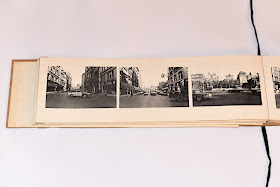In the mid-seventies in New York City crime was at an all-time high and tourism at an all-time low. The New York State Department for Economic Development tasked Madison Avenue ad firm Wells Rich Greene to develop a marketing campaign that would counter the negative coverage of riots, blackouts, muggings, fires, the Son of Sam killer, garbage strikes, a drug and crime epidemic, and neighbourhoods that had fallen into a state of disrepair.
The resulting 1977 campaign included the Steve Karmen song "I Love New York" as a commercial jingle and a now-ionic log by Milton Glaser (previously best known for a psychedelic poster of Bob Dylan). The logo was conceived in a taxi cab, with "I ❤ NY" scribbled in crayon in a single line, which later changed to the present stacked letters (which Glaser later admitted might have been "subliminally" influenced by Robert Indiana's
LOVE), and the serif typeface American Typewriter.
The campaign was truly a labour of love, with Karmen relinquished his publishing rights for the song, and Glaser also working pro bono. “You want to do things like that, where you feel you can actually change things,” he said in a recent interview in The Believer.
The campaign was launched forty-two years ago today, on Valentine's Day, with TV commercials featuring eighty Broadway actors, singers and dancers performing the "I Love New York" theme song. Originally intended as a five-week campaign, it continues to this day.
Glaser's original concept sketch (above, top) and presentation boards are currently in the collection of the Museum of Modern Art, New York.
The New York State Empire State Development, New York’s chief economic development agency, holds the trademark to the “I Love New York” logo, and licenses its use. It's estimated that sales of merchandise such as mugs and t-shirts emblazoned with Glaser’s design generates more than $30 million a year. The state fights to uphold its trademark with over 3,000 objections against imitators so far, and an average of 100 trademark objections and cease-and-desist letters filed yearly.
The works above presumably fall under fair use. They are by Cary Leibowitz, David Shrigley, Mark Pawson, Sarah Nasby, Jeremy Deller, Claude Closky, Ross Sinclair, Adam Rolston and Ugo Rondinone (about Gertrude Stein, Andy Warhol, John Giorno, John Cage, Claude Closky, etc.)
























































